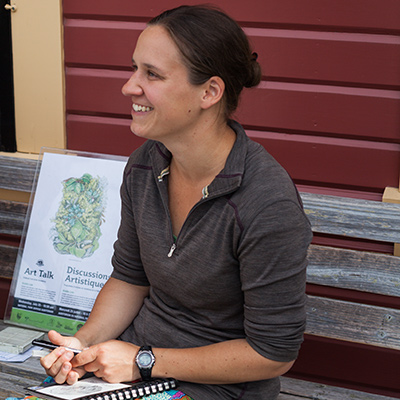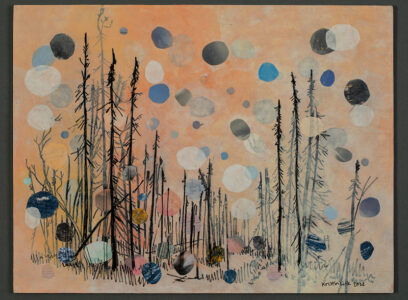Kristen Link
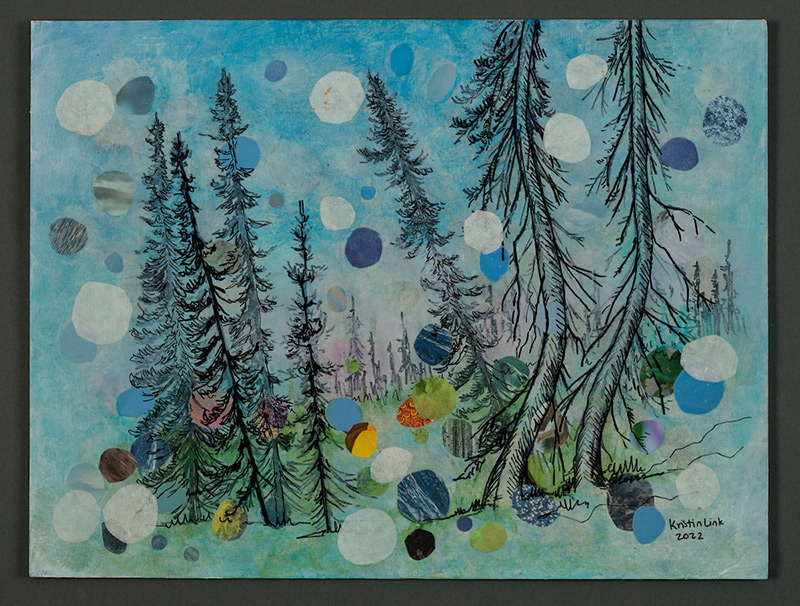
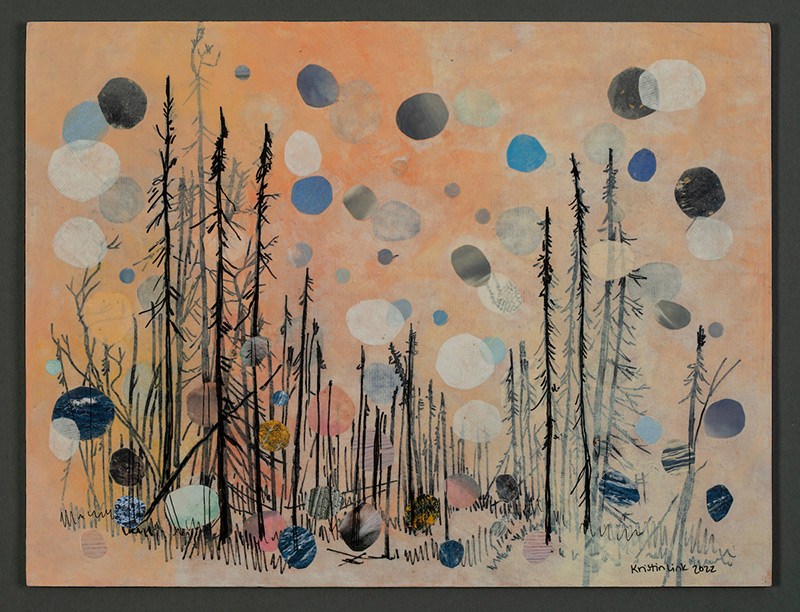
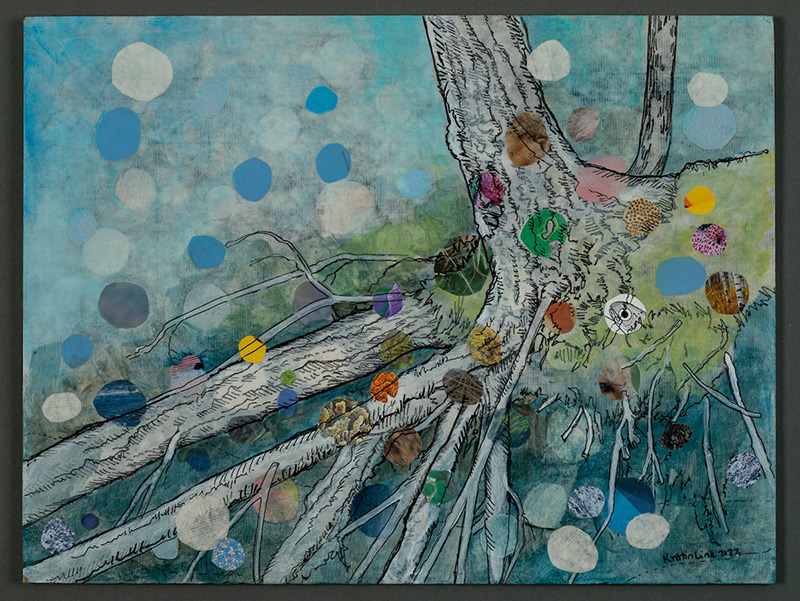
Leach and Flux
This series “Leach and Flux” explores the nitrogen cycle in the boreal forest and how it may be changing with the climate, specifically as wildfire and permafrost thaw increase in intensity or frequency. This work was inspired by presentations and discussions with Dr. Tamara Harms (UAF).
This work uses mixed-media collage to visualize the invisible nitrogen cycle as small, round cut-outs to depict where one nitrogen atom may be in its journey through the boreal forest. These pathways of collage elements are layered with drawings of the boreal forest on a scale that humans encounter, focusing on black spruce trees. The shape of spruce trees, especially in forms that are burnt and twisted, reflect the dynamic processes of fire and thaw that occur in the boreal forest.
Fire and permafrost thaw are both natural processes that normally occur in the boreal forest, but the frequency and severity with which they occur are being affected by changes in climate. Dr. Harms studies how much nitrogen leaves the boreal forest by looking at discharge in streams and has found changes in watersheds that drain burned forests and areas with permafrost thaw. As fire severity and frequency change, more of the nitrogen in the organic layer in soil is lost and burned into the atmosphere. Likewise, with less vegetation, more nitrogen leaves the ecosystem by being leached away in groundwater. As permafrost thaws, water (and nitrogen) flows through deeper soils, where different processes take place and where this limiting nutrient (nitrogen) may be less bioavailable to shallow root systems and organic materials. Research has also found that nitrogen may be leaving the ground as gas, particularly in the forms of greenhouse gases, where permafrost is thawing. Through leaching (in water) and flux (as gas), more nitrogen may leave an ecosystem after fire and permafrost thaw.
It can be sad and depressing to dwell on the current climate emergency but it is important to see changes such as the nitrogen cycle in these invisible systems. I hope that my work also celebrates some of the beauty and connection that we share with the boreal forest through nitrogen and makes it feel more relevant to our lives.
Kristin Link
Kristin Link is a fine artist and science illustrator living in the boreal forest on the Nizina River and Ahtna Land in the middle of Wrangell-St. Elias National Park and Preserve. She makes mixed-media work and drawings that reflect on our connection to the natural world. You can find more of her work at KristinLink.com or @linkkristin on Instagram.
Website: www.kristinlink.com
